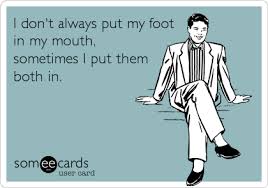What are demographics and how have they been useful?
Demographics have long been, and still are, the primary types of categories used to measure and understand people. Truly, demographic categories can still tell us a lot about our social structure. The census reveals our national changes each decade based primarily on demographic information. For macro level understandings of people and societies demographics can still be quite useful. However, as communications professionals, our goals are typically less broad and far reaching than those of the US Census.
Demographics are based on identities that are assigned by our societal structures. For example, our notions of race and gender are social constructs assigned at birth that we may or may not ultimately identify with. Historically these demographic identities have been thought to be closely linked with habits, norms and preferences of people. Demographics like race and gender have been huge determinants of several other factors of our lives, like whether or not we will earn a certain type of degree, purchase a home or vote a certain way. As these demographic understandings of people were relied upon, more and more cultural assumptions (aka stereotypes) were born. As communications professionals, when we rely on these broad categories of demographics to reach our publics we contribute to these cultural assumptions which have negative consequences both on a societal level and to our own campaigns. In essence, cultural assumptions are alienating and offensive.
What has Changed?
How people connect and communicate has been radically changed by technology and continues to change exponentially over time. As technology fills more niche communication needs, people are becoming more globally interconnected than ever before. These new technologies create spaces for like-minded individuals to communicate where there may not have been the opportunity prior.
With technology came options and as technology has become more pervasive over time demographic identities have become less and less useful in understanding people (Johanna Blakley explains it beautifully in her Ted Talk “Social Media and the End of Gender”).
People were no longer confined to the same choices that their parents and their parents’ parents had before. Nowadays choice is abundant and connecting with people who like what you like outside of societal confines has never been easier. People now have the power to create spaces for their preferences to share with others that exist only across communication channels that are made possible by new media and technologies.
I like to think of these spaces that people create as “imagined communities,” a term coined by theorist Benedict Anderson. Anderson explains that imagined communities are communities in which it’s likely the members will never meet face to face or intimately know each other but share a deep sense of fraternity or camaraderie. Anderson uses the concept of nation as an example; people have sacrificed their lives to defend the community of the nation, but in reality those soldiers who fight to protect their nations will meet only a very small fraction of those who make it up.
Today imagined communities are being created at an exaggerated rate compared to Anderson’s example of the nation. New technologies afford like-minded individuals forums through which to connect and exist as communities. For example, fans of the Atlanta Braves have no concrete boundaries or confines, are numbering in the hundreds of thousands (most will never know or even meet one another), and yet there is a strong sense of fraternity among them. Television, radio, and internet allows those who are far removed from Atlanta, and may never see a game at Turner Field, to stay connected with the happenings, attitudes, and mentalities of their fellow Braves fans. With the development of social media these communities are being created by people that are farther and farther apart physically. Social media and the internet serve as vehicles through which individuals can communicate with other members of their imagined communities while also providing forums for these communities to exist. Another example, Facebook has created a space for groups where participants actively join to become members, these members could be from different corners of the earth but they can share a sense of community through the channel of Facebook. Additionally, it is easier than ever to maintain the fallacy of these communities because contact between members can be made from almost anywhere at any time. Sites like Twitter keep these groups who are geographically distant connect through communication.
How does it affect PR?
Now that people have more vehicles and forums to create imagined communities, it may be beneficial for public relations practitioners to think of their publics in terms of the imagined communities to which they may belong. While the use of demographic information has been very useful in identifying publics in the past, with the technological developments of the past 20 years it’s time to ask if that is still the most effective and tactful way to reach our publics. Delivering our public relations messages to the communities which may be interested in our message or organization seems more targeted than simply reaching out to the demographic most likely to be interested. This approach could potentially save PR practitioners time and money and begin a trend of reaching people on more personal levels rather than relying on demographics which are plagued by cultural assumptions.



